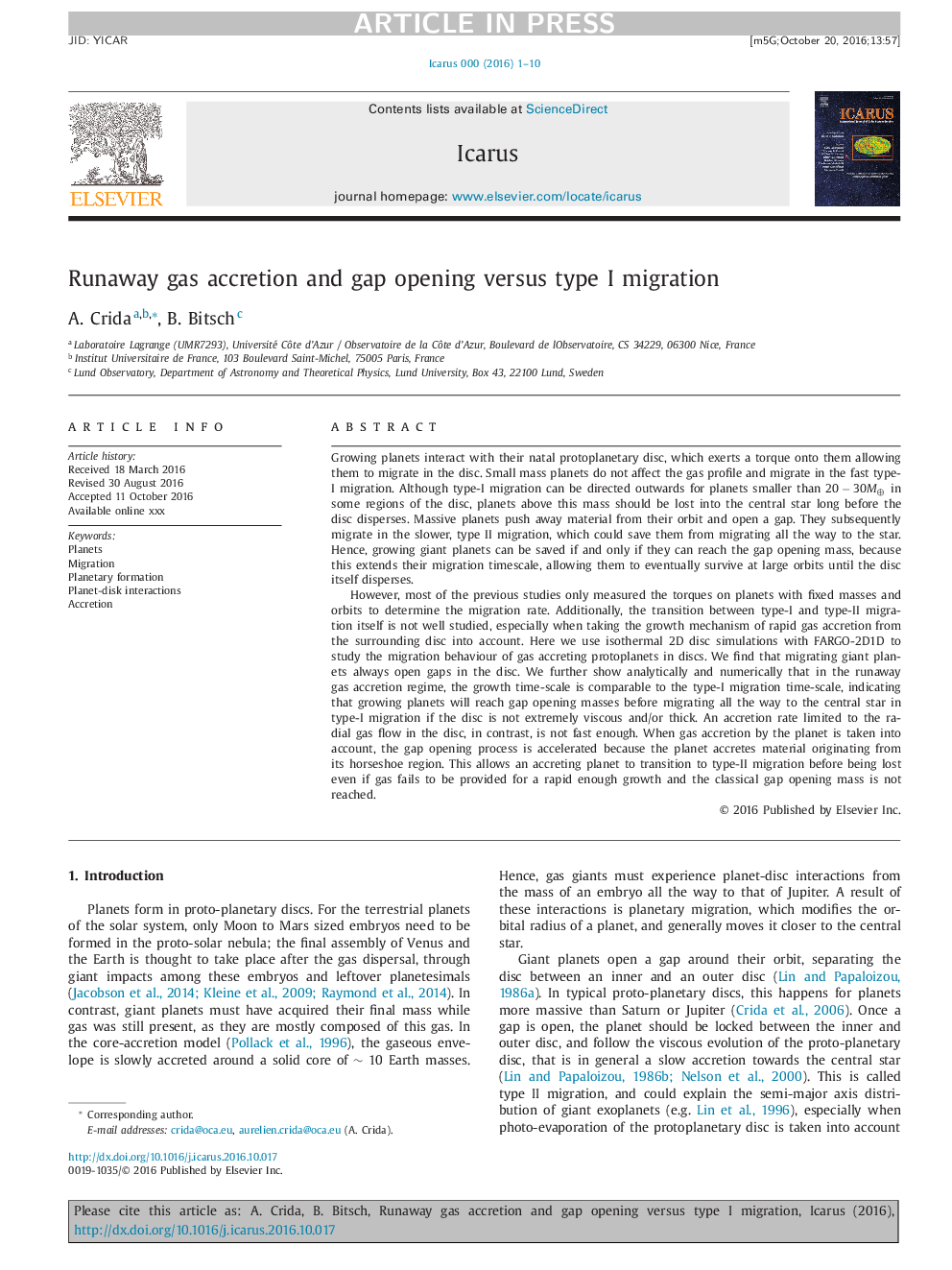| Article ID | Journal | Published Year | Pages | File Type |
|---|---|---|---|---|
| 5487061 | Icarus | 2017 | 10 Pages |
Abstract
However, most of the previous studies only measured the torques on planets with fixed masses and orbits to determine the migration rate. Additionally, the transition between type-I and type-II migration itself is not well studied, especially when taking the growth mechanism of rapid gas accretion from the surrounding disc into account. Here we use isothermal 2D disc simulations with FARGO-2D1D to study the migration behaviour of gas accreting protoplanets in discs. We find that migrating giant planets always open gaps in the disc. We further show analytically and numerically that in the runaway gas accretion regime, the growth time-scale is comparable to the type-I migration time-scale, indicating that growing planets will reach gap opening masses before migrating all the way to the central star in type-I migration if the disc is not extremely viscous and/or thick. An accretion rate limited to the radial gas flow in the disc, in contrast, is not fast enough. When gas accretion by the planet is taken into account, the gap opening process is accelerated because the planet accretes material originating from its horseshoe region. This allows an accreting planet to transition to type-II migration before being lost even if gas fails to be provided for a rapid enough growth and the classical gap opening mass is not reached.
Related Topics
Physical Sciences and Engineering
Earth and Planetary Sciences
Space and Planetary Science
Authors
A. Crida, B. Bitsch,
